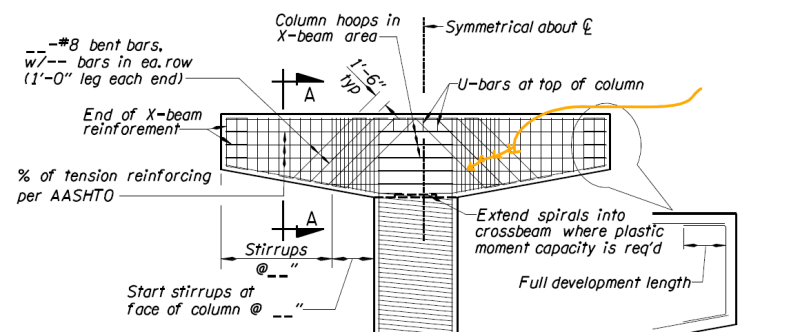Nayan67
Civil/Environmental
- Feb 8, 2023
- 30
Hello everyone,
I was just curious about the reinforcement detailing in the hammerhead beam. Is there any particular reason for using diagonal reinforcement (please see the attached figure)?
Regards

I was just curious about the reinforcement detailing in the hammerhead beam. Is there any particular reason for using diagonal reinforcement (please see the attached figure)?
Regards

